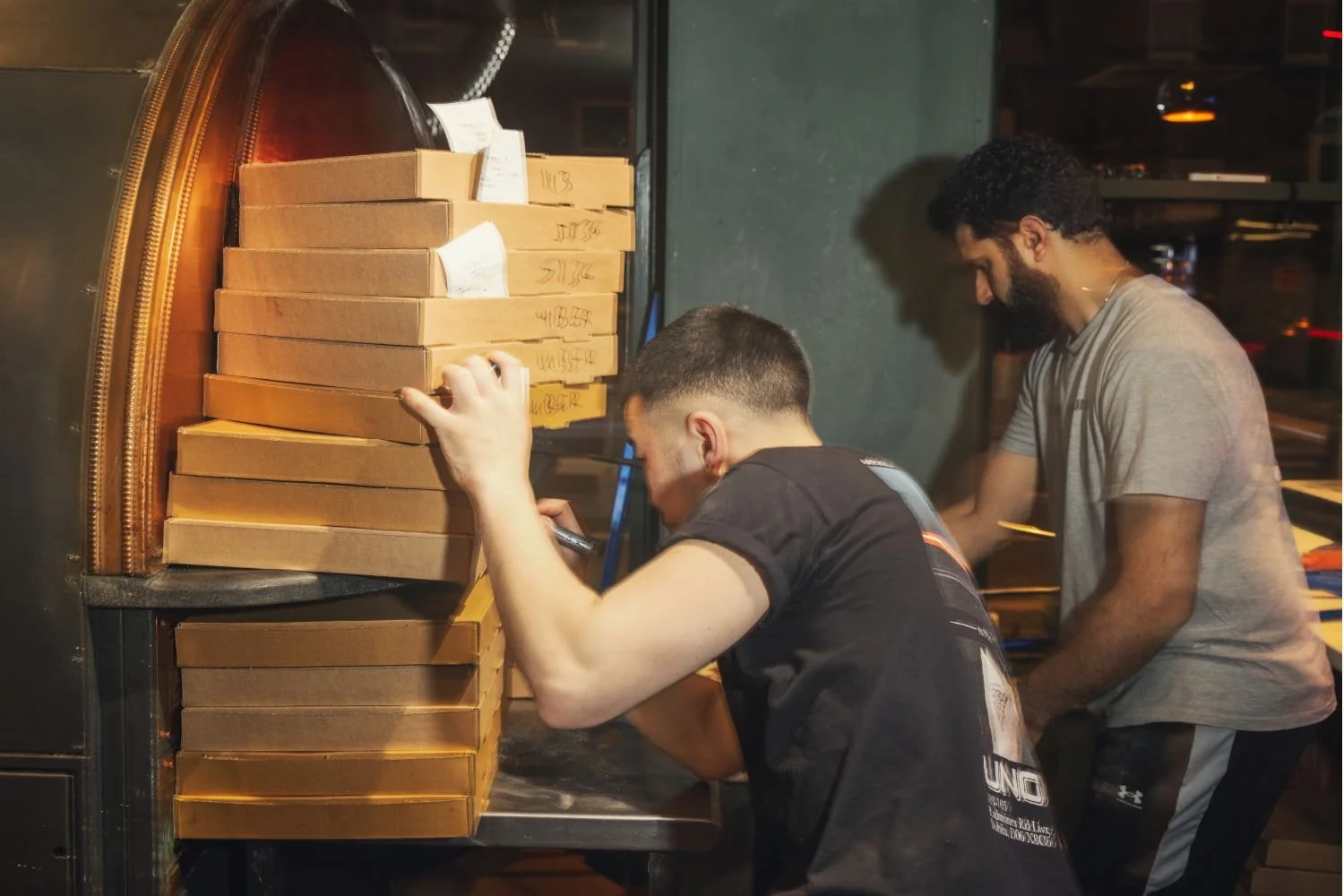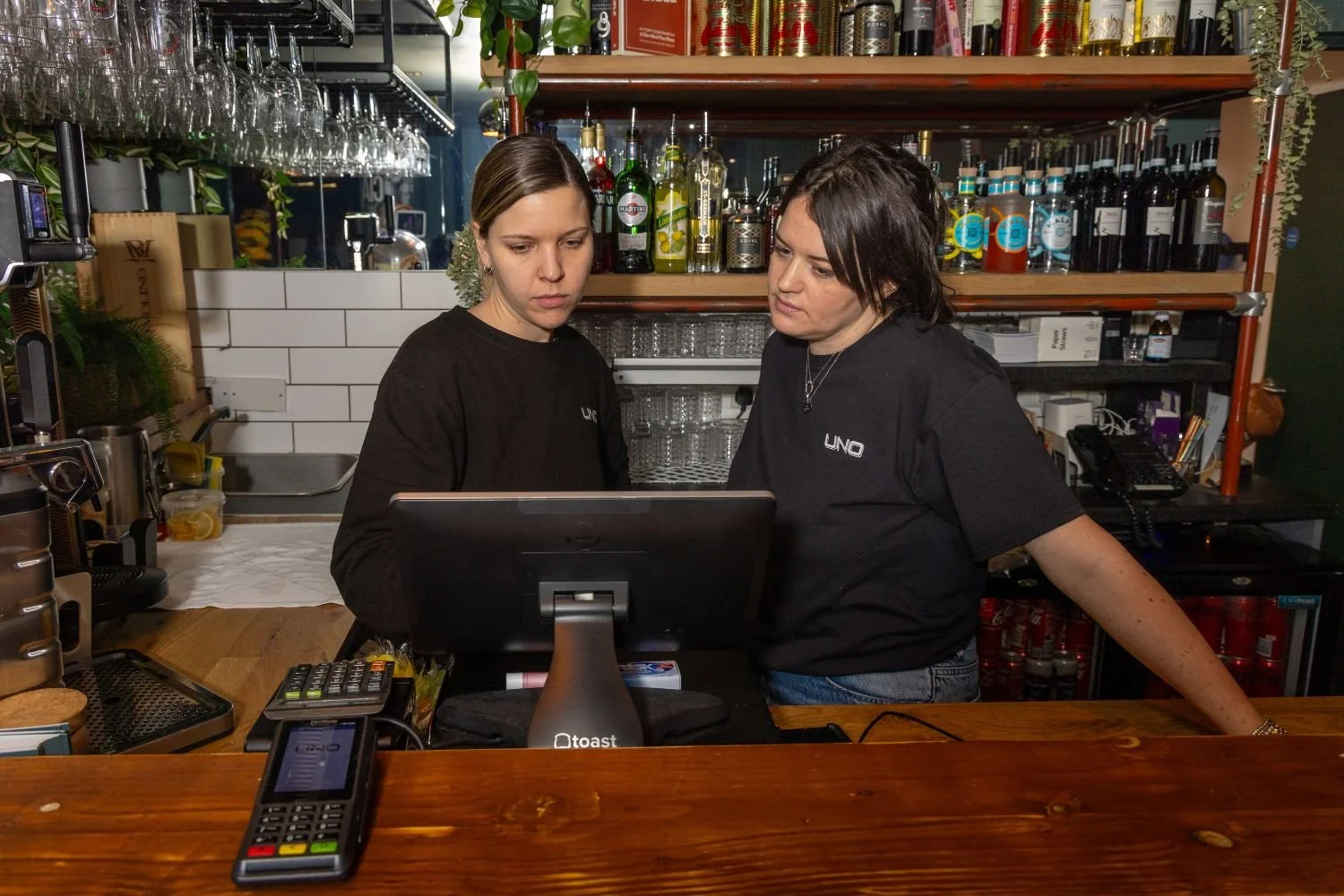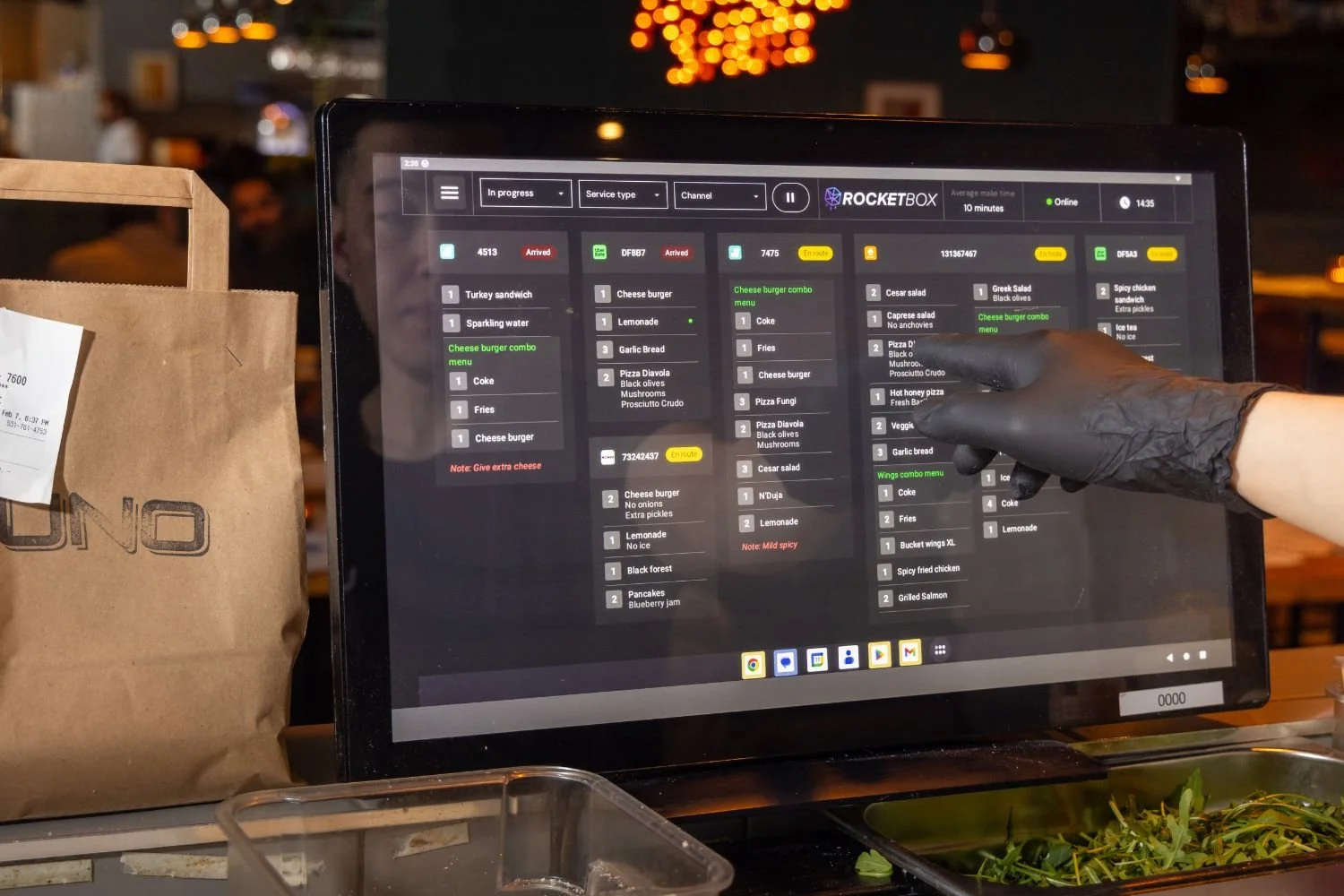Common Restaurant Problems and How to Solve Them Fast
Introduction
Restaurant problems are a daily challenge for owners, managers, and kitchen staff alike. From slow service during peak hours to miscommunication between the front and back of house, these issues can quickly impact customer satisfaction, revenue, and staff morale. Studies by the National Restaurant Association (NRA) show that operational inefficiencies remain one of the top reasons restaurants struggle to maintain consistent service quality and profitability.
Many of these challenges stem from kitchen problems, including delayed orders, inventory mismanagement, and lack of clear communication. While traditional methods like paper tickets and manual tracking have worked in the past, modern restaurants need faster, smarter solutions to stay competitive. This is where technology, particularly a kitchen display system (KDS), comes into play. A KDS can streamline order management, reduce errors, and enhance overall kitchen efficiency, allowing staff to focus on cooking quality meals rather than chasing missed tickets or correcting mistakes.
In this article, we’ll explore common restaurant problems and provide actionable strategies to solve them quickly. You’ll learn how leveraging technology like KDS and AI solutions such as RocketBox - can help improve workflow, reduce errors, and create happier guests. Whether you’re a small delivery restaurant or a multi-location chain, these insights will give you the tools to optimise operations and achieve smoother service.
Identifying Common Restaurant Problems
Every restaurant faces challenges that can disrupt operations, reduce customer satisfaction, and even hurt the bottom line. Recognising restaurant problems early is crucial to keeping both the kitchen and front-of-house running smoothly. These issues often fall into three main categories: operational, guest experience, and technology gaps.
Operational Challenges in the Kitchen
Many kitchen problems arise from inefficiencies in workflow and communication. Common examples include:
Delayed or missed orders: A busy kitchen without proper order tracking can easily misplace tickets, causing delays and frustrated customers.
Bottlenecks in food preparation: When multiple dishes require the same equipment or station, wait times increase.
Orders prepared at incorrect times: Having orders ready too early means the food gets cold waiting for the delivery driver to arrive, impacting both efficiency and customer satisfaction.
For instance, a small bistro might struggle when multiple orders arrive simultaneously, leading to confusion among chefs. Without a clear system like a kitchen display system (KDS), these errors can quickly pile up.
Guest Experience Issues
Customer-facing problems often stem from kitchen inefficiencies but are felt immediately by guests:
Long wait times: Patrons are less likely to return if service is slow, even if the food quality is excellent.
Incorrect orders: Mistakes in food delivery frustrate guests and increase labor costs.
Inconsistent service quality: Without a streamlined process, guest experiences vary from one delivery to the next.
These challenges highlight the importance of aligning kitchen efficiency with front-of-house and delivery operations to maintain consistent service standards.
Technology Gaps
Even experienced teams struggle when using outdated systems:
Manual ticketing systems: Paper tickets can be lost or misread, slowing down the entire process.
Disconnected POS and kitchen systems: When orders aren’t communicated in real time, chefs can miss critical details.
Limited reporting and tracking: Managers cannot identify recurring issues without clear operational data.
Investing in modern technology, especially a kitchen display system, can bridge these gaps, reduce errors, and make day-to-day operations much smoother.
How Kitchen Display Systems Solve Restaurant Problems
For restaurants struggling with operational inefficiencies, many restaurant problems can be directly addressed with technology. A kitchen display system (KDS) is one of the most effective tools to streamline operations, reduce errors, and improve kitchen efficiency. By replacing paper tickets and manual communication, KDS enables staff to focus on delivering quality food faster and more consistently.
What is a Kitchen Display System?
A kitchen display system is a digital platform that replaces traditional paper tickets in the kitchen. It typically consists of:
Digital screen: Displaying real-time orders with details such as time order was received, modifications, and priority.
Integration with POS systems: Orders from the front-of-house are automatically transmitted to the relevant kitchen stations.
Workflow management tools: Including timers, alerts, and order tracking features.
Unlike paper tickets, a KDS provides instant updates, reduces the chance of lost or misread orders, and helps staff prioritise tasks efficiently. The clarity and speed it offers directly enhance kitchen efficiency.
Benefits of KDS for Restaurants
Implementing a KDS can transform daily operations in several ways:
Reduced errors and food waste: Clear digital tickets minimise mistakes and avoid unnecessary remakes.
Improved communication between front and back-of-house staff: Real-time updates keep everyone on the same page, especially during peak hours.
Restaurants that adopt a KDS often report noticeable improvements in speed and accuracy, which translates into higher guest satisfaction and better reviews.
Use Cases and Examples
The benefits of KDS extend across different types of restaurants:
Small restaurants: Even a single-screen setup can dramatically reduce order errors and speed up service during dinner rushes.
Multi-location chains: Centralised data from KDS across multiple locations can track performance, identify recurring kitchen problems, and standardise operations.
For instance, a mid-sized pizza restaurant using a basic KDS can reduce order errors and cut preparation time within three months of implementation. This measurable improvement highlights how technology can solve persistent restaurant problems efficiently.
Boosting Kitchen Efficiency with Technology
Addressing restaurant problems goes beyond identifying issues - it requires actionable strategies to improve kitchen efficiency. Modern restaurants increasingly rely on technology, particularly KDS and integrated software, to streamline operations, reduce errors, and empower staff to work smarter rather than harder.
Streamlined Order Management
Integrating a KDS with your POS system is a game-changer for managing orders efficiently:
Automatic ticket prioritisation and routing: Orders are sent directly to the appropriate station based on preparation time, complexity, or dietary requirements.
Real-time updates: Changes or modifications to an order are instantly reflected on the screen, eliminating confusion.
Reduced manual errors: By removing paper tickets, staff can focus on cooking and serving rather than tracking down lost orders.
For example, a busy café using a POS-KDS integration reduced order errors by 25% during peak hours and improved table turnover without compromising quality.
Inventory and Workflow Automation
Technology also plays a critical role in managing inventory and workflow:
Track stock levels in real time: Automated alerts notify staff when ingredients are low, reducing last-minute substitutions.
Predictive preparation: Using historical data, systems can suggest prep quantities to avoid bottlenecks and minimise food waste.
A mid-sized bistro reported that implementing inventory automation reduced waste by 15% in just two months, highlighting how tech can directly address kitchen problems.
Employee Training and Tech Adoption
Even the best systems are only effective when staff are trained properly:
Onboarding made easy: Digital tutorials and step-by-step guides help new employees get up to speed quickly.
Gamifying efficiency: Tracking performance and rewarding consistency encourages staff to adopt new tools enthusiastically.
Ongoing support: Regular feedback loops ensure staff stay confident using the system, further enhancing kitchen efficiency.
Restaurants that invest in both technology and staff adoption see smoother operations and fewer errors, ultimately improving customer satisfaction.
Solving Common Kitchen Problems Step by Step
Addressing restaurant problems effectively requires a structured approach to tackle inefficiencies and streamline operations. By implementing modern tools and strategies, restaurants can improve kitchen efficiency, reduce errors, and enhance staff performance.
Miscommunication and Order Errors
Miscommunication is one of the most frequent kitchen problems. A simple mistake, such as misreading a paper ticket, can disrupt service and frustrate guests. A kitchen display system (KDS) reduces this risk by:
Displaying real-time orders at the appropriate station
Highlighting modifications or special requests clearly
Updating tickets instantly if changes occur
For example, a family-owned diner that implemented KDS reported a 35% reduction in incorrect orders within the first two months. Staff could focus on preparation instead of clarifying orders, boosting both speed and accuracy.
Slow Food Prep and Delays
Delays in food preparation often stem from workflow bottlenecks or unbalanced station workloads. Strategies to optimise workflow include:
Organising prep stations by dish type or complexity
Staggering preparation schedules to prevent congestion
Using RocketBox for real-time order tracking, enabling chefs to see which dishes require immediate attention
Restaurants using RocketBox have reported a noticeable reduction in table wait times during peak hours, helping them serve more guests efficiently without sacrificing quality.
Staff Management and Shift Coordination
Efficient staff allocation is crucial for maintaining kitchen efficiency:
Assign tasks based on station expertise and workload
Use automated alerts for rush hours or high-priority orders
Monitor staff performance to adjust shifts dynamically
By combining KDS alerts with management dashboards, restaurants can prevent overcrowding in certain stations and keep service smooth even during busy periods.
Measuring and Monitoring Performance
Tracking metrics is essential for ongoing improvement:
Key Performance Indicators (KPIs): Order accuracy, preparation time, and table turnover rates
Dashboards and reporting: Visual insights help managers quickly identify bottlenecks and recurring kitchen problems
Restaurants that regularly monitor KPIs see measurable improvements in speed and service quality. For example, a multi-location chain used dashboard data to standardise prep times across locations, reducing average order fulfillment by 15%.
Frequently Asked Questions (FAQ)
What are the most common restaurant problems?
Restaurant problems often arise from operational inefficiencies, miscommunication, and outdated technology. Typical issues include slow food preparation, missed or incorrect orders, inconsistent service, and inventory mismanagement. These challenges can affect both staff performance and guest satisfaction. According to the National Restaurant Association, more than half of operational inefficiencies in restaurants stem from communication breakdowns and manual processes.
How does a kitchen display system improve efficiency?
A kitchen display system (KDS) improves kitchen efficiency by replacing paper tickets with digital order management. Orders are sent directly to the correct station in real time, highlighting modifications and prioritising tasks automatically. This reduces errors, minimises delays, and keeps both front-of-house and back-of-house staff synchronised, allowing the kitchen to operate more smoothly during peak hours.
Can KDS reduce food waste in restaurants?
Yes. By providing accurate, real-time information about orders, a KDS helps kitchens prepare only what is needed, reducing overproduction and mistakes that lead to waste. Integrated inventory tracking features can alert staff when ingredients are running low, further improving kitchen efficiency and lowering operational costs.
How does RocketBox help manage kitchen operations?
RocketBox is an advanced kitchen display system that offers real-time order tracking, automated ticket routing, and detailed performance dashboards. It helps restaurants streamline workflows, address recurring kitchen problems, and ensure dishes are prepared on time. With RocketBox, restaurants can optimise staff allocation, improve order accuracy, and enhance guest satisfaction consistently across every shift.
Advanced Insights and Trends in Restaurant Tech
As restaurants continue to face restaurant problems, technology is evolving rapidly to provide smarter, more efficient solutions. From AI-driven systems to voice-activated interfaces, the latest innovations aim to improve kitchen efficiency, reduce errors, and enhance overall operations.
Emerging Technologies
Modern tools are reshaping how kitchens operate:
AI-driven kitchen optimisation: Artificial intelligence can predict peak periods, optimise prep schedules, and even suggest ingredient quantities based on historical data. This reduces bottlenecks and improves order accuracy.
Voice and tablet-based systems: Hands-free voice systems allow chefs to mark tasks as completed without touching screens, while tablets at prep stations display real-time orders and updates, enhancing communication between front and back-of-house staff.
Restaurants adopting these technologies report faster service and fewer mistakes, particularly during peak hours.
Challenges in Technology Implementation
While promising, new tech adoption comes with hurdles:
Cost: Advanced systems require upfront investment, which can be a barrier for smaller operators.
Staff resistance: Employees may be hesitant to adopt new tools without proper training.
Integration issues: Systems need to work seamlessly with existing POS and inventory management solutions.
Mitigation strategies include phased rollouts, hands-on training, and choosing scalable systems like KDS that integrate easily with existing workflows.
Expert Advice
Industry leaders emphasise the importance of future-proofing operations:
Evaluate technology that improves both speed and accuracy in the kitchen.
Prioritise solutions that provide actionable data, such as dashboards and KPIs for kitchen efficiency.
Start with core functionality, then expand capabilities as staff become comfortable.
For example, multi-location chains using integrated KDS solutions report consistent performance across sites, fewer kitchen problems, and higher guest satisfaction.
RocketBox: The AI Powered KDS
Conclusion
Addressing restaurant problems effectively requires both awareness and action. From miscommunication and order errors to slow food prep and inefficient workflows, identifying the root causes is the first step toward smoother operations. Implementing a kitchen display system (KDS) can dramatically improve kitchen efficiency, reduce mistakes, and streamline communication between front and back-of-house staff.
Solutions like RocketBox offer reliable, real-time order tracking and management tools that help restaurants optimise workflows, minimise errors, and deliver a consistently excellent guest experience. By integrating modern technology into daily operations, restaurant teams can focus on what truly matters - preparing quality food and keeping customers satisfied.
Now is the perfect time for operators to evaluate their current systems, consider tech upgrades, and invest in tools that address persistent kitchen problems, ultimately driving operational excellence and happier guests.



